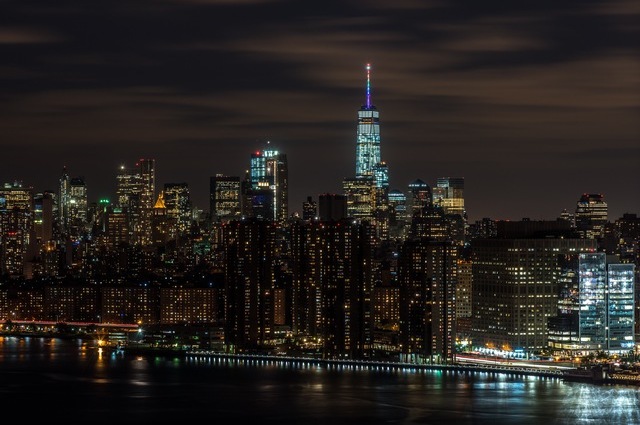U. S. Metropolitan Areas

A metropolitan or micropolitan statistical area refers to a core area with a significant population nucleus and adjacent settlements. Those should be highly integrated economically and socially with that core. This is how 2010 standards define metropolitan and micropolitan statistics. The latest delimitations were released in March 2020. There are, until this last delimitation, 384 metropolitan statistical areas.
Although the term has changed through time, it did not affect its meaning too much. In 1949, the delineations were issued as Standard Metropolitan Areas (SMA). It changed to Standard Metropolitan Statistical Area (SMSA) in 1959. Later, in 1983, it changed again to Metropolitan Statistical Area (MSA). In the ’90s Consolidated Metropolitan Statistical Areas (CMSA) and Primary Statistical Areas (PMA) took place. In the 2000s, the term Core Based Statistical Area (CBSA) appeared. Nowadays it is common to refer to these areas as the core based or the consolidated metropolitan statistical areas.
All in all, The Consolidated Metropolitan Statistical Areas (CMSA) are areas stipulated by The U.S. Census Bureau. They are urban areas with one or more counties. Their population in the city and its surrounding suburbs must be at least 100,000. The suburbs must have a certain percentage of the urban population or population density. These vicinal areas must also be economically and socially linked with the center city, usually through a high commuting flow. Some metropolitan areas have multiple large cities, although none of them is significantly more dominating than the others.
The Best Metropolitan Areas
As said before, there are 384 Metropolitan Areas in the United States. Here are some of the most important ones.
New York: According to Thought Co. This is the number one area. It has been the largest area since the first census in 1790. Its population reached 19,768.46 people in 2021.
Los Angeles: The area was the fifth largest one in 1940 but it has grown and conquered the second place. Its population reached 12,997.35 people in 2021.
Chicago: In 1980, this area lost to Los Angeles and it is now the third largest one. Its population reached 9,509.93 people in 2021.
Austin-Round Rock: This is the fastest-growing metropolitan area. Its population increased by more than 14% in 5 years (2015 to 2020). In 2020 the population was 2,295,303.
Raleigh: From 2015 to 2020 this area increased its population by 11.7%. It is the second fastest-growing MA in the U.S.
Phoenix-Mesa-Scottsdale: The third place in the fastest-growing MA has its population increased by 10.5%. Their recent movers come mostly from Los Angeles.
Las Vegas: The number 5 in the list of fastest-growing MA is also listed here because Nevada, its state, is considered the fastest-growing state together with Idaho. This happens because California, one of the top fastest-growing MAs in the west is now losing residents. These people are looking for other neighboring states and end up in states like Nevada where it is cheaper to live with lower taxes and has a growing market.
Las Vegas Valley
As an important major metropolitan area in the Southern Nevada and the second largest in the Southwestern United States, the area is now standing out due to its fast growth. The Las Vegas Metropolitan Statistical Area, the largest urban agglomeration in the state, has been coextensive with Clark County, Nevada, since 2003. The Las Vegas Valley landform has a 600 sq mi (1,600 km2) basin area encircled by mountains to the north, south, east, and west of the metropolitan area. The three biggest incorporated communities in Nevada—Las Vegas, Henderson, and North Las Vegas—are all located in the Valley. The Las Vegas Valley has experienced substantial expansion since the 1990s, with its population estimated to have tripled from 741,459 in 1990 to 2,227,053 in 2018. In 2020 its population was 2,292.48 people.
In its relatively short history, the Las Vegas Valley has established a diverse presence in international business, commerce, urban development, and entertainment, as well as one of the most popular tourist destinations in the world. It continues to be one of the fastest-growing metropolitan areas in the United States. Just to exemplify, a record-breaking 41 million people visited the Las Vegas region in 2014.
The growth of the Metropolitan Area
We already know tourism is the main source of income in this area, but today, other significant factors are increasing the city’s revenue, including shopping, conventions, excellent eating, and natural beauty. In recent years, both the population and tourism of Las Vegas have increased. The urban area has expanded so swiftly that it now borders assets owned by the Bureau of Land Management on all sides. Due to the rise in land values medium- and high-density construction is now taking place closer to the city center.
Most of this population, as stated before, come from California in order to find cheaper houses and pay lower taxes since Vegas doesn’t have personal income tax. Also retirees have been coming to the metro area over the past few years, driving businesses that assist them from housing to healthcare.
Despite a 40% increase in housing costs in 2004, Nevada continues to be a desirable location for many businesses to migrate to or grow their operations due to the absence of business and income taxes. For example, call centers have always tended to find Las Vegas to be an excellent area to hire individuals who are used to working around the clock because it is a true twenty-four-hour metropolis. The economy of Las Vegas also includes a portion of the construction sector. It may take years to construct the hotel casinos planned for the Strip and this will demand hiring thousands of staff.
The luxury market is also increasing a lot. Nowadays Las Vegas has multiple retail meccas, ultra-luxury homes and other luxury experience-based attractions like the luxury ground transportation. If you are an investor or just a visitor of this luxury fast-growth area, get a quote with us and experience part of the luxury market.
